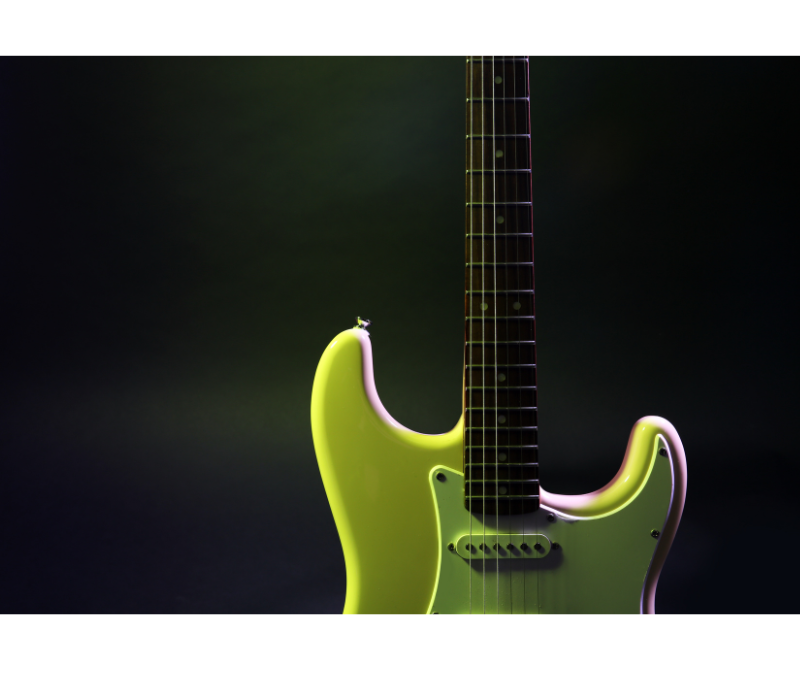Welcome, fellow guitar enthusiasts! Today, we embark on an exciting journey to unlock the secrets of guitar arpeggios. Whether you’re a beginner eager to add depth to your playing or an intermediate player looking to enhance your skills, mastering arpeggios is a crucial step in your musical evolution.
Arpeggios, derived from the Italian word “arpeggiare,” meaning “to play on a harp,” are the musical equivalent of painting with individual brushstrokes, allowing you to express melodies and harmonies with precision and clarity. They’re not just scales; they’re the building blocks of chords, offering a rich tapestry of sound that can elevate your playing to new heights.
So, let’s explore the world of guitar arpeggios and uncover three secrets to mastering them:
- Understanding the Anatomy of Arpeggios:
It’s essential to understand what arpeggios are and how they function. Simply put, an arpeggio is a chord played one note at a time. Instead of strumming all the strings simultaneously, you pick each note individually, creating a cascading effect that emphasizes the harmonic structure of the chord.
For instance, let’s take a C major chord. Instead of strumming all the strings, you can play the notes C, E, and G individually in a sequential manner, creating a C major arpeggio. Understanding the notes within different chord shapes is fundamental to mastering arpeggios, as it allows you to navigate the fretboard with ease and precision.
- Developing Finger Dexterity and Coordination:
Like any aspect of guitar playing, mastering arpeggios requires disciplined practice and patience. One of the secrets to success lies in developing finger dexterity and coordination. Start by practicing simple arpeggio patterns, focusing on clean and precise execution.
Begin with basic chord shapes such as major and minor triads and gradually progress to more complex chords like seventh and extended chords. Set aside dedicated practice time each day to work on arpeggios, incorporating exercises that target specific finger movements and transitions between chords.
For example, try practicing ascending and descending arpeggio patterns across different chord shapes, paying close attention to your picking hand’s movement and ensuring each note rings out clearly. As you build muscle memory and finger strength, you’ll find that navigating through arpeggios becomes increasingly fluid and effortless.
- Embracing Expression:
While technical proficiency is essential, true mastery of guitar arpeggios lies in your ability to infuse them in your solos and improvisations. Don’t just focus on playing the notes mechanically; strive to convey emotion and dynamics through your arpeggio playing.
Experiment with different articulations such as hammer-ons, pull-offs, and slides to add texture and nuance to your arpeggios. Explore varying rhythms and phrasing to create interest and tension within your playing. Remember, it’s not just about hitting the right notes but also about conveying the intended mood and atmosphere.
Additionally, listen to recordings of your favorite guitarists and study how they incorporate arpeggios into their playing. Analyze their techniques and borrow ideas that resonate with you, but don’t be afraid to inject your personality and creativity into your arpeggio practice.
3 ways to practice guitar arpeggios
- Isolated Arpeggio Exercises: Start by isolating individual arpeggio patterns and practicing them slowly and methodically. Choose a chord progression or a specific chord type (e.g., major, minor, dominant) to focus on. Begin by playing each arpeggio ascending and descending in a steady rhythm, ensuring that each note rings out clearly.You can use a metronome to maintain a consistent tempo and gradually increase the speed as you become more comfortable with the patterns. Pay close attention to your fretting hand’s finger placement and your picking hand’s technique, aiming for smooth and fluid transitions between notes.As you progress, challenge yourself with variations such as string skipping arpeggios, arpeggios with added extensions (e.g., ninth, eleventh), and arpeggios across multiple octaves. The key is to break down the arpeggio patterns into manageable chunks and practice them diligently until they become second nature.
- Chord Progression Integration: Another effective way to practice guitar arpeggios is by integrating them into chord progressions. Choose a progression that incorporates the chords you’ve been practicing arpeggios for and play the arpeggios over each chord change.Start by strumming the chords in the progression to establish the harmonic context, then switch to arpeggios during subsequent repetitions. This exercise will help you develop the ability to seamlessly transition between chords and arpeggios, enhancing your overall musicality and improvisational skills.Experiment with different progressions and musical styles to keep things interesting and challenging. Focus on maintaining a consistent groove and rhythm while incorporating the arpeggios, paying attention to the interplay between melody and harmony.
- Application in Songs and Solos: Finally, one of the most enjoyable ways to practice guitar arpeggios is by applying them in songs and solos. Choose a song or solo that features prominent arpeggio passages and learn to play them note-for-note.Break down the arpeggio sections into smaller phrases and practice them slowly, gradually increasing the speed as you gain proficiency. Pay attention to the timing, dynamics, and articulations used in the original recording, aiming to replicate the nuances in your own playing.Additionally, try incorporating arpeggios into your own compositions and improvisations. Experiment with different chord progressions and melodic ideas, using arpeggios as a creative tool to add depth and dimension to your music.By actively applying arpeggios in real musical contexts, you’ll not only reinforce your technical skills but also develop a deeper understanding of how arpeggios can be used to enhance your musical expression.
Incorporating these three approaches into your practice routine will help you develop a well-rounded mastery of guitar arpeggios, empowering you to unlock new creative possibilities and elevate your playing to new heights.
In conclusion, mastering guitar arpeggios is a rewarding journey that requires dedication, perseverance, and a willingness to explore new horizons. By understanding the anatomy of arpeggios, developing finger dexterity and coordination, and embracing musicality and expression, you can unlock the full potential of this versatile technique and take your guitar playing to the next level. So, pick up your guitar, embark on this adventure, and let the magic of arpeggios ignite your musical passion!

Download The FretDeck & Chord Secrets Course!
Download Course










